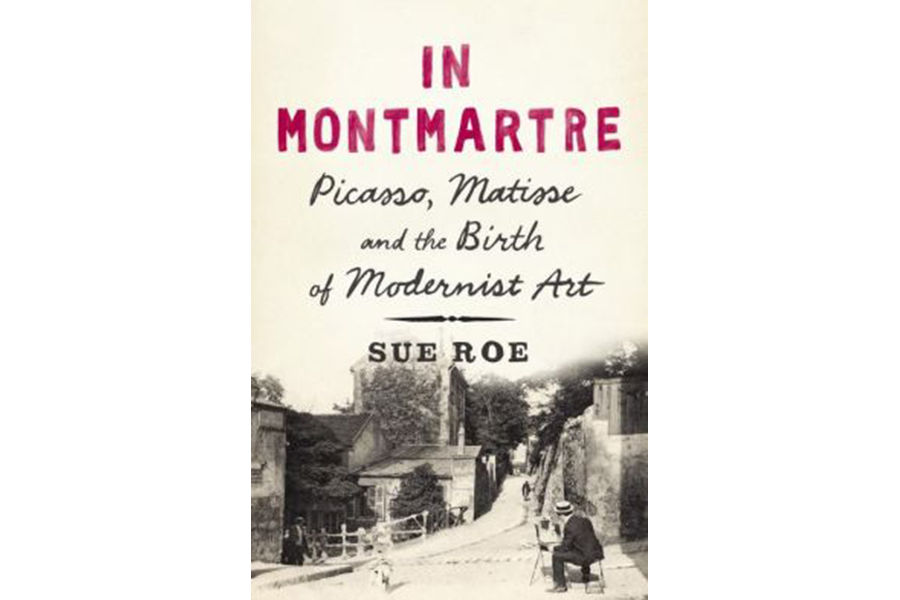'In Montmartre' tells a compulsively readable story of 20th-century art
Loading...
In October 1900, a very young Pablo Picasso went to Paris for the first time. His stay was relatively brief and he traveled back and forth to Spain several times before permanently settling in the French capital. But according to Sue Roe’s new book In Montmartre: Picasso, Matisse and the Birth of Modernist Art, this small, otherwise unremarkable visit marks the birth of 20th-century art.
Picasso, like most of the other young avant-garde artists in Paris, settled in Montmartre, then a small, rural hilltop village that consisted of “crumbling houses, tiny cramped studios in dilapidated buildings, [and] shabby cafes and gloomy bars.” The early years were financially challenging – Picasso was desperately poor. Henri Matisse, slightly older and somewhat better known, was already a familiar figure in the neighborhood. But like the newcomer, Matisse was financially strapped. Indeed, his oldest child, Marguerite, was born in a workhouse.
Roe’s engaging and insightful book does not break any new ground as she relies heavily on secondary sources. But she compiles and distills an enormous amount of information as she describes the rapid and dramatic changes in art at the dawn of the new century in the City of Light. It is organized around these two men and their efforts to create an artistic vocabulary, cultivate clients, and eke out an existence. By the end of the decade, both artists were reasonably well established. It had not been easy, but they were well on their way to fame and fortune.
The story has a huge cast. While Picasso and Matisse occupy center stage, many other artists play supporting roles. Andre Derain, Maurice Vlaminck, Henri Rousseau, and Amedeo Modigliani are well known to those with even a passing interest in modern art. But others – like Marie Laurencin and Maurice Utrillo – are largely forgotten today. Major collectors and art dealers, like Gertrude and Leo Stein, Sergei Shchukin, Ambroise Vollard, and Daniel-Henry Kahnweiler are also an important part of the story. Even the American aviator Wilbur Wright makes an appearance.
As in "The Private Lives of the Impressionists," her earlier book on the Parisian art world, Roe proceeds in a strictly chronological fashion. However, the story is harder to follow in this volume because it was a more complex era. The Impressionists were closely aligned and their eight joint exhibitions between 1874 and 1886 provide a strong framework for organizing that story. But with the new century, art history ceased to follow a single storyline. New developments led to competition and rapidly shifting allegiances even within the small community of avant-garde artists. Georges Braque and Andre Derain, for example, first appear as close collaborators with Matisse in creating the Fauves. Before long however, Derain slipped into Picasso’s orbit before eventually going his own way. Braque moved far away from the Fauves’ interest in non-representational color and, with the development of Cubism, became exceptionally close to Picasso.
Roe does two things very well. First, she clearly describes how the two central directions of modern art emerged. Matisse was interested in color and decoration while Picasso focused on line and form. Indeed, she suggests that Picasso’s artistic direction may have partly been a reaction to Matisse’s emphasis on color – he felt the need to move in a different direction. Much of 20th-century art grows out of their different explorations in this pivotal decade.
Second, she examines some of the major changes in popular culture that helped shape artistic developments. Movies, the circus, dance halls, and posters all helped form an artistic milieu that influenced what the painters did on canvas. She devotes considerable analysis to the revolutionary developments in fashion (designer Paul Poiret) and dance (Serge Diaghilev and the Ballets Russes). She clearly demonstrates that there was a great deal of sharing and cross-fertilization of ideas as "the disparate, fragmented social circles” that revolved around artists, dancers, musicians, and fashion designers began to overlap.
One wishes that the book contained more illustrations; a number of the works she discusses in some detail are not pictured which means that the careful descriptions she offers are of limited value unless the reader happens to already know the works. Particularly disappointing is the absence of a map of Paris. Roe repeatedly provides very exact geographic detail (“Matisse was living in lodgings in the rue de Châteaudun, in the 9th arrondissement near the boulevard de Clichy and the Gare Saint Lazare, the district bordering on Montmartre; the studio he rented was on the fifth floor of an apartment on the Left Bank, at 19 quai Saint Michel”) but such precision does not mean much unless the reader is equipped with a strong sense of Parisian geography.
The story of Paris in the early 20th century is one of those amazing subjects in art history – along with the Renaissance, the Impressionists, the Abstract Expressionists and anything involving van Gogh – that is guaranteed to attract an army of readers. Roe assembles the complex, disparate developments of the decade into a compulsively readable, fascinating story.








